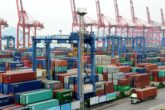September 07, 2022
Reimagine: Clean Energy Technology and U.S. Industrial Policy
Executive Summary
Historically, the United States has been the largest public investor in clean energy research and development (R&D). U.S. research institutions and private firms continue to hold a technological lead in many next-generation technologies that could make the transition away from fossil fuels cheaper and more efficient. Such technologies include next-generation solar photovoltaic technologies, advanced battery chemistries, and software to manage complex energy systems, including those with high penetrations of wind energy.
Although the United States was an early leader in clean energy R&D and continues to make major technological advances, it has, over time, fallen behind in the commercialization and manufacturing of the technologies developed domestically. This study reviews U.S. industrial policy for clean energy sectors and argues that other economies have more frequently used proactive industrial policies to support the development of domestic clean energy technology industries. Too often, the United States has not mounted an equivalent industrial policy response. The U.S. government has instead focused more narrowly on funding the invention of new technologies and, intermittently, supported domestic markets for clean energy technologies through federal and state programs. Such policies have included, for instance, federal R&D grants for universities, research institutes, and the private sector, as well as subsidies and regulations to support the growth of clean energy markets at the federal and state level.
Although the United States was an early leader in clean energy R&D and continues to make major technological advances, it has, over time, fallen behind in the commercialization and manufacturing of the technologies developed domestically.
This U.S. approach to encouraging the growth of domestic clean energy industries has assumed that market failures primarily exist in innovation. Since firms cannot in all cases reap all the gains from investments in the development of new technologies, they are likely to underinvest in innovation, creating a need for governments to supplement private-sector investments in R&D. The U.S. approach to clean energy industrial policy also assumes that investments in R&D will eventually spur the growth of domestic industries if combined with sufficient market demand. Yet U.S. industrial policy has not addressed key institutional shortcomings in segments of clean energy supply chains that are not well supported domestically, particularly in scaling new technologies to mass manufacturing. As a consequence, many technologies developed with public R&D funding failed to reach domestic mass production, as firms were unable to make the investments required to bring the technologies to market domestically.
The report develops four recommendations to improve the competitiveness of domestic clean energy industries. First, the United States should establish a state development bank that could fund domestic manufacturing projects in sectors, such as clean energy, that have struggled to raise financing from U.S. financial institutions. The scarcity of capital for clean energy manufacturing has prevented domestic startups from raising the financing required to commercialize and produce their technologies domestically. Second, the U.S. government should ramp up investments in vocational training programs that would meet the workforce needs of growing clean energy manufacturing sectors. Third, the federal government should set stable regulatory requirements and binding targets for clean energy markets as part of a national strategy for competitiveness in clean energy sectors. This would reduce uncertainty injected by the intermittent and fragmented nature of current government support for clean energy sectors and create incentives for the private sector to invest in domestic supply chains for clean energy technologies. Fourth, the United States should limit the use of trade restrictions as industrial policy tools and instead focus on improving the competitiveness of domestic clean energy firms through proactive industrial policies. Trade restrictions can limit the ability of domestic clean energy firms to source materials, parts, and components through global supply chains; may lead to increased prices in ways that can harm domestic clean energy service industries; and obstruct the climate diplomacy needed to meet the goals of the Paris Agreement.
At the moment, geopolitical shifts, strategic competition with China, and the ripple effects of the war in Ukraine provide a political opening for the consistent deployment of more ambitious industrial policies. The United States should use this opportunity or risk falling behind other economies, including those in Europe, that have made the development of domestic clean energy supply chains central elements of their response to climate change.
Download the Full Report
More from CNAS
-
Red Lines and Supply Chains: Trump’s Approach to Trade and Security
The Trump administration is increasingly linking trade policy to national security. Join Emily Kilcrease, senior fellow and director of the Energy, Economics, and Security Pro...
By Emily Kilcrease
-
Ziemba: Struck By Energy Deal Between India & Saudi Arabia
Saudi Arabia and India have agreed to deepen energy ties and cooperate more closely on tourism and technology as the countries seek to strengthen relations at a time of turbul...
By Rachel Ziemba
-
What is President Trump’s Economic Plan?
Global financial markets plunged as investors braced themselves for a shock to the flow of international trade. Faced with prolonged market turmoil, within days the US Preside...
By Emily Kilcrease
-
Bloomberg Businessweek: Age of Economic Warfare
Columbia University Senior Research Scholar and adjunct senior fellow at the Center for a New American Security, Edward Fishman on US credibility and how that is affecting its...
By Edward Fishman





